4 Ways to Spot High-Quality Wood Flooring
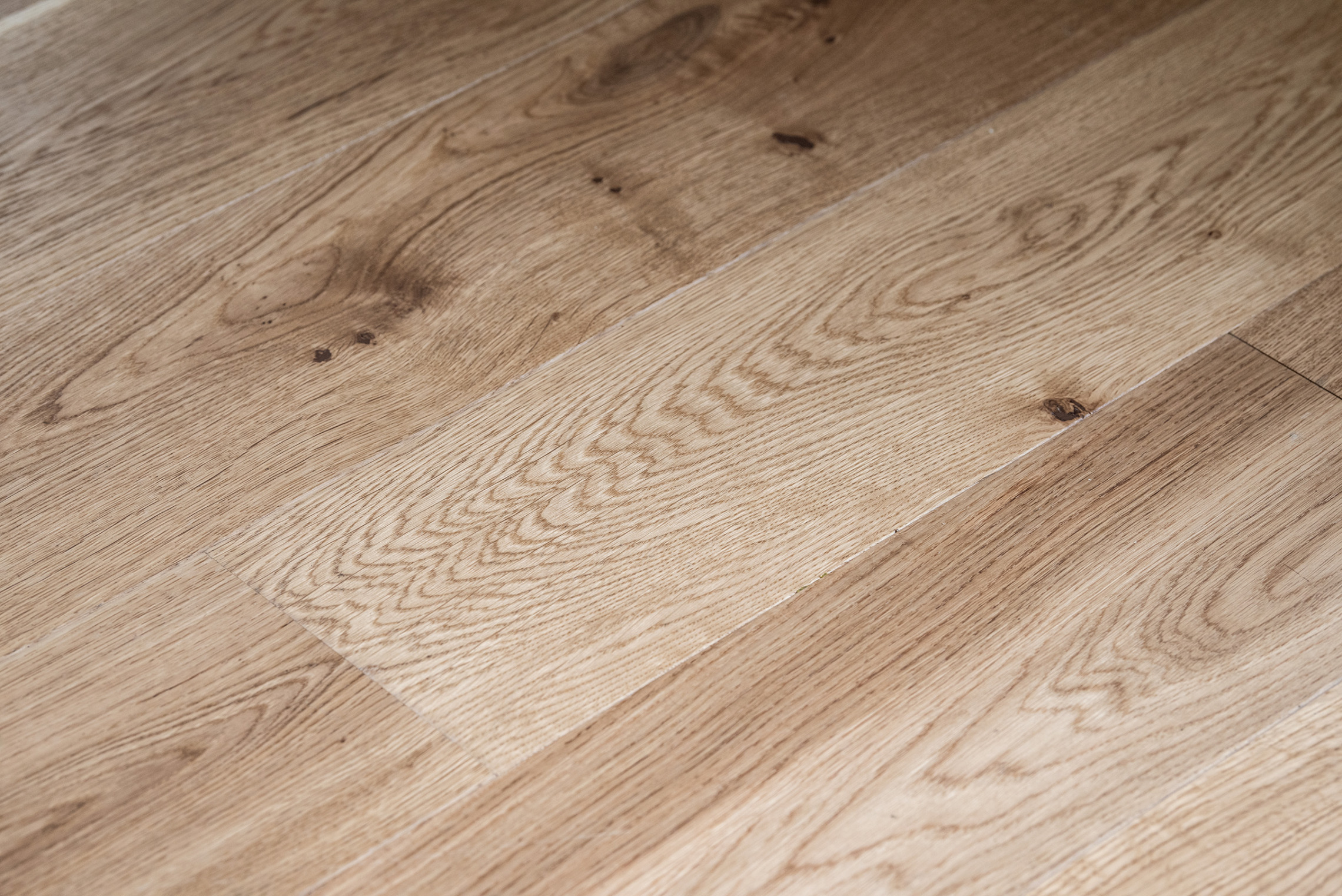
What to Look For in Top-Quality Engineered Hardwood Planks
Choosing high-quality engineered oak planks will allow you to create beautiful, long-lasting wood flooring in any interior space. But what should you be looking for in a floorboard? And how can you tell if you’re looking at top-quality wood flooring?

1. The Top Layer (Wear Layer)
When examining the features of hardwood flooring, the appearance of the face of the board is a sensible place to start. The top layer of an engineered hardwood plank is what you’ll be walking on, and it’s what you’ll see when the floor is laid, so it’s vital that it’s durable and that it looks beautiful.
It should always be a dry sawn layer of solid wood, rather than a thin rotary peeled layer. Dry sawn top layers retain the natural grain of solid hardwood flooring with no repeating patterns.
The top layer of our Bristol Tectonic® oak planks are made with a dry sawn layer of durable, high-quality European oak.
Grain Patterns
A lot of the visual interest of wood flooring comes from the beautiful variation of the wood’s grain. Oak provides a very attractive grain that displays a unique pattern — like a tree’s individual fingerprint — on each board.
Its wood is described as straight grained; this means the grain generally runs in one direction. That said, the appearance of the grain on an oak floor is diverse due to the way the wood grows and the way it’s processed after the tree is felled. The grain patterns come from natural arrangement, size, and direction of these wood fibres, and the way in which the boards are sawn.
Beauty is subjective, but we believe high-quality floorboards should display defined flowing grain patterns with a clear direction and natural variation, creating interesting organic shapes.

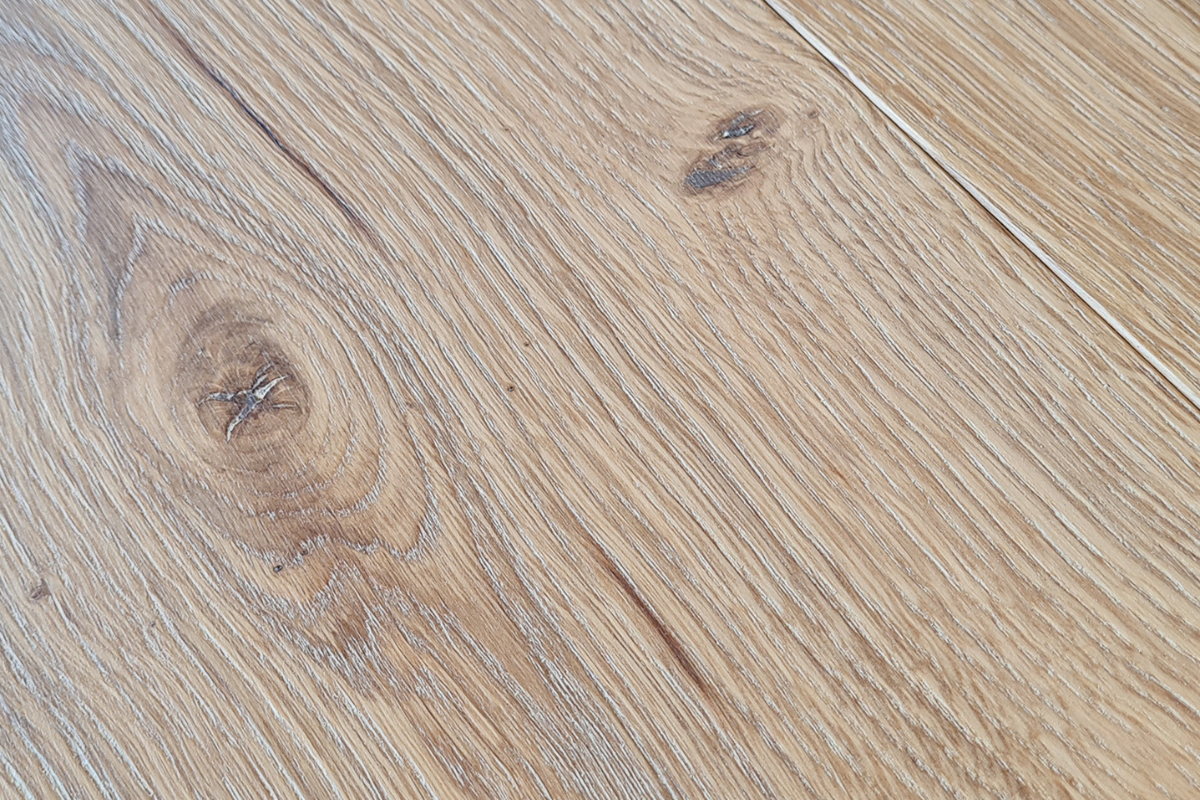
About Grading
Sawmills select flooring timber with a tighter, straighter grain, and fewer knots than timber designated for other uses. Wood flooring is selected and categorised into grades based on the features and appearance of the hardwood top layer.
Our entire range of boards, whether it be our highest graded planks or our more characterful ones, are all made using the same exacting techniques to exceptional standards. It’s all about the look of the boards: colour variance, frequency of knots, and imperfections like sapwood are all considered.
See our Grading Guide for more information.
The Grade of Our Engineered Oak
Generally, we offer our oak planks as ‘Prime’ grade and ‘Character’ grade.
Prime grade planks create a sleek, more uniform appearance; character grade planks have more of the timber’s natural variations and imperfections for a more rustic look.
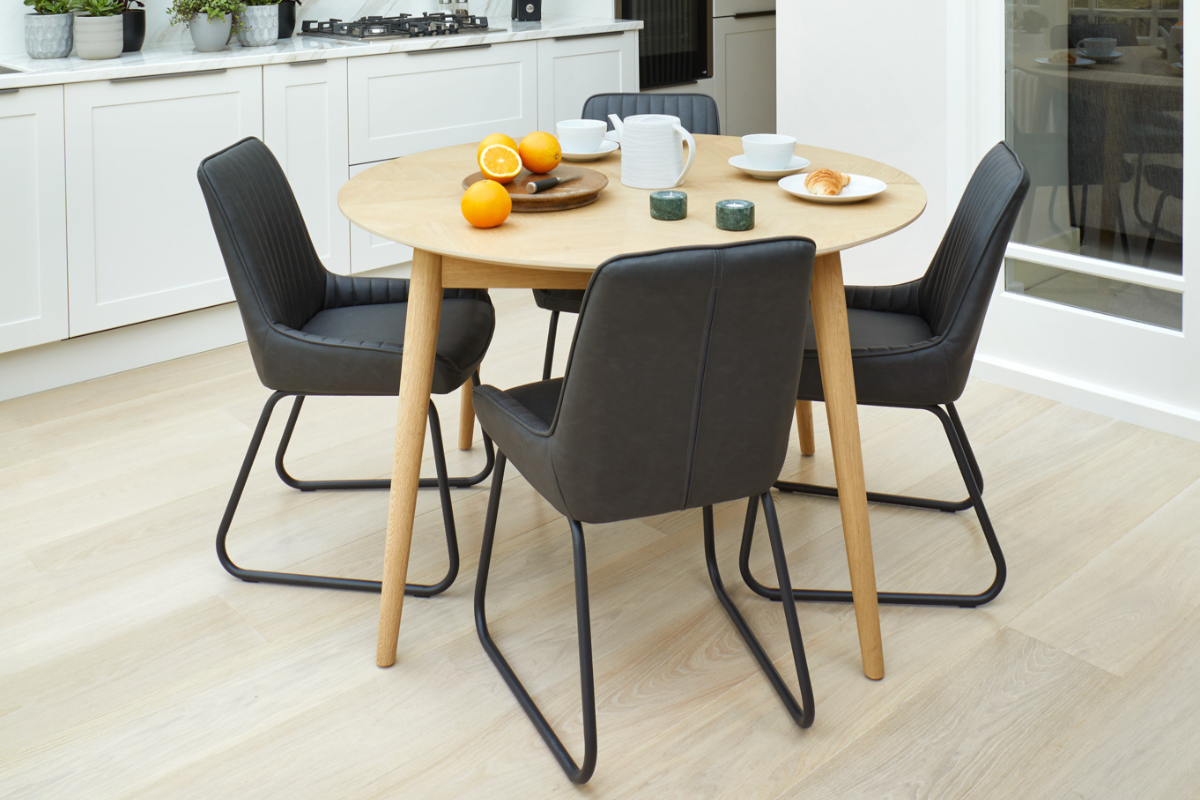
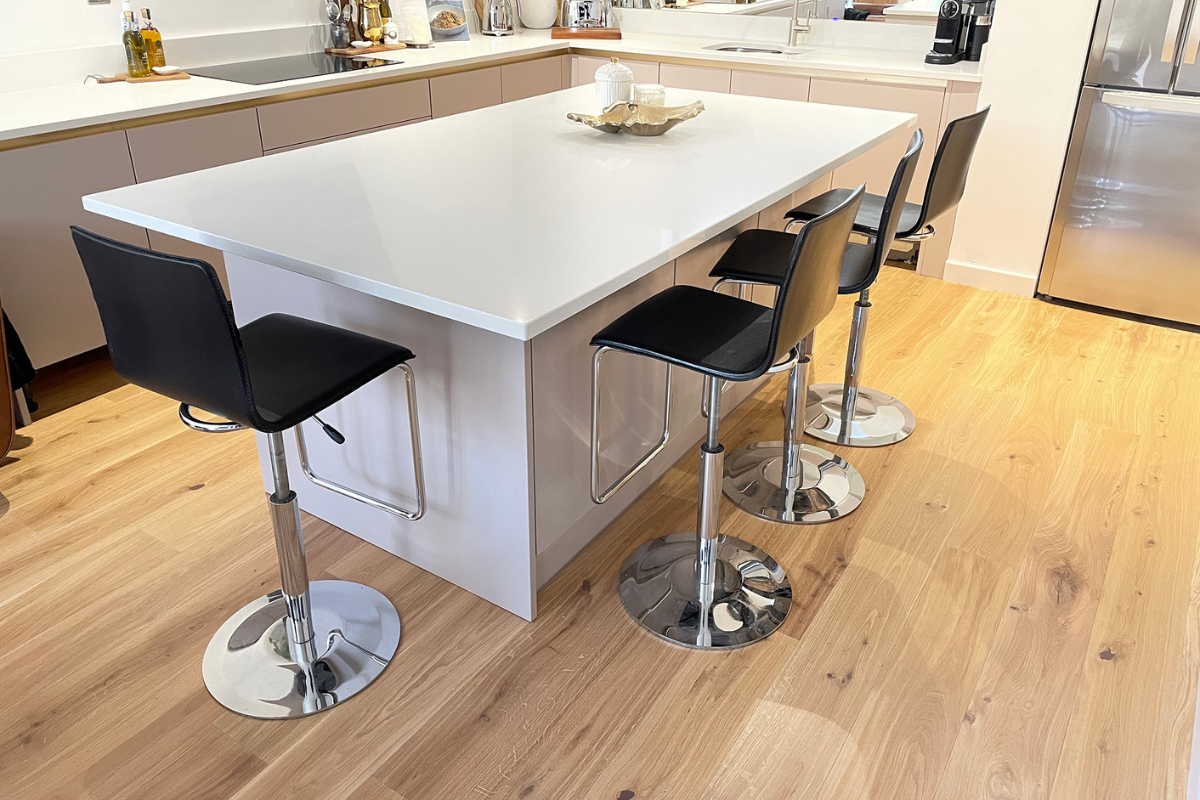
A Thick Solid Wood Top Layer
Whichever grade you choose, the oak top layer should be made of strong, straight, durable timber of the highest quality. And it should be thick enough to withstand years of wear and tear.
A good quality top layer should give you the ability to sand and re-finish the floor multiple times with no issues. If you want a floor that lasts, we would advise avoiding any engineered wood flooring with a top layer that’s less than 3mm thick.
Bevel Edges
If your boards are bevelled, look for clean accurate bevel edges that are consistent on every board.
Our boards are micro-bevelled as standard — with eased edges on two sides and perfect matching at the end joints — subtly defining each board for a quietly traditional appearance that suits any interior.
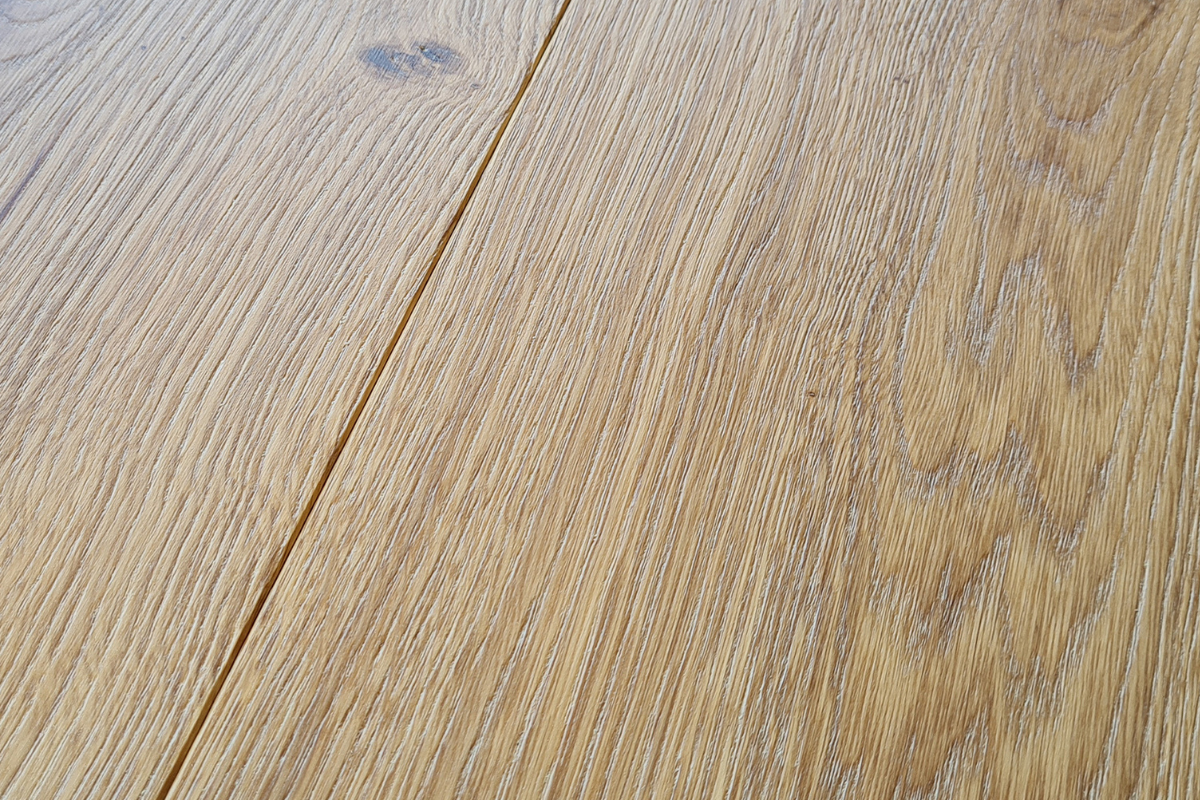

2. The Engineered Ply Base
Construction
The engineered base is the material your solid hardwood top layer is bonded to. The base of your wood flooring should be made of high-grade water-resistant birch plywood to ensure the highest levels of structural stability and enduring performance. This is a key reason why our Bristol Tectonic® oak planks create such stable, versatile flooring, and it’s what makes them suitable for installation onto underfloor heating systems.
Essentially, the more layers that make up the base, the more dimensional stability and strength it will have. Some lower quality boards might have as few as three layers of ply whereas premium engineered planks have at least nine layers of high-quality plywood. These multiple ply layers are arranged perpendicular to each other when they are bonded under high pressure.
To create our planks, all materials are meticulously dried and evenly acclimatised, then cold press bonded using top-quality adhesives.

Tongue and Groove Joints
Look for clean, precise milling to provide the finest quality tongue and groove joints; these should fit together securely with little effort.
Our mills use state-of-the-art, diamond tooling to cut precise tongue and groove joints. High-quality tongue and groove joints like these are vital to help you create exquisite long-lasting flooring, and will also make your wood flooring easier to fit, saving you time and avoiding fitting hassle.
3. A Precise Fit
When you put two planks together on a flat, level surface, they should fit together easily and the boards should sit flush with one another to create a smooth, seamless floor. If not, this could indicate an issue with the moisture content of the boards, or could be a sign of poor machining.
A quick check: put two boards together end to end and look for a lip at the end of the board, where they meet. You can simply run your finger across the joint to check if one board is sitting higher than another.
Sometimes lower quality flooring will hide imprecision by putting a bevels on the ends of boards to hide the lips at the end joints.
Our Bristol Tectonic® planks are calibrated to thickness by extremely accurate sanding. This means we only need to bevel our boards along the two sides, with boards meeting perfectly flush with one another at the end of each plank.
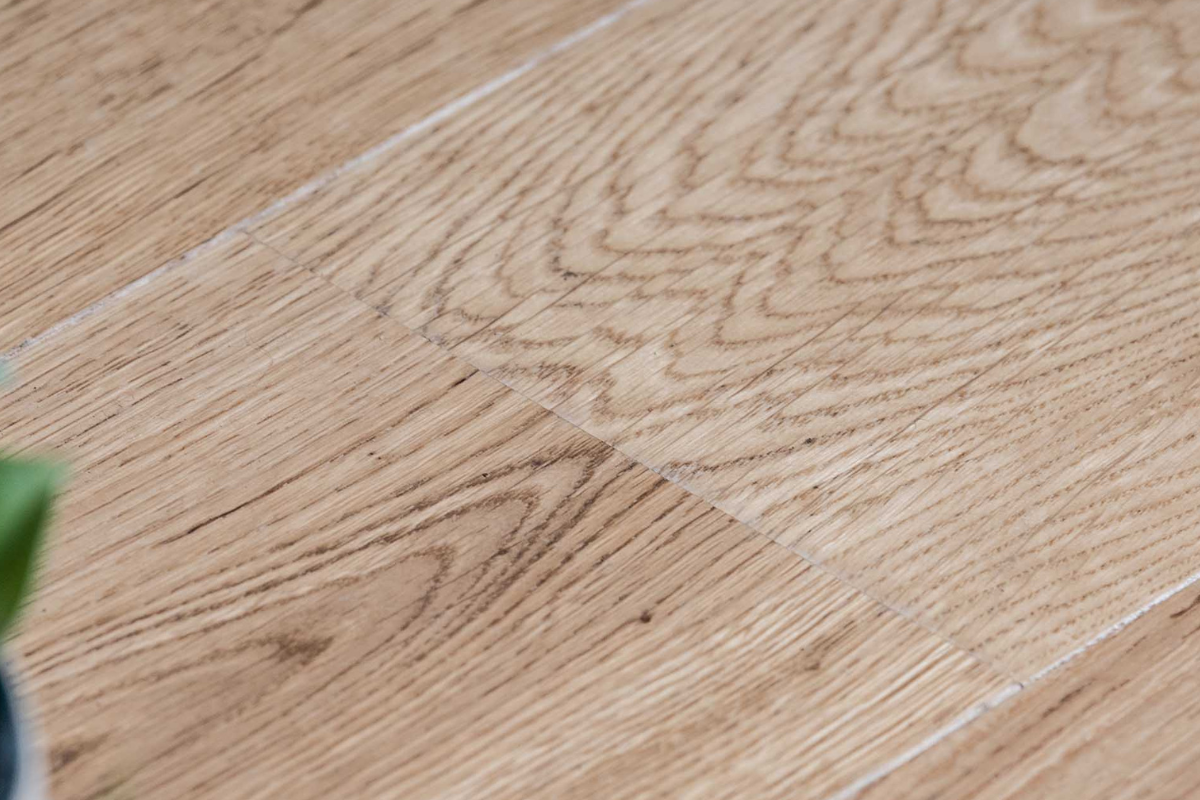
4. Width and Length Options
To get the premium wood flooring aesthetic, look for planks with a range of width specifications and a good average board length.
Board length is important to the overall look of the floor, and, especially in larger rooms, the number of joints created by using shorter planks could look too busy for the space. Likewise, you should be able to select a board width that suits the dimensions of your room.
We supply our Bristol Tectonic® planks in mixed lengths from 0.6m up to 3m, with an average board length of 2m. These engineered oak boards are available in a range of widths from 130mm wide, up to our 300mm wide planks.
